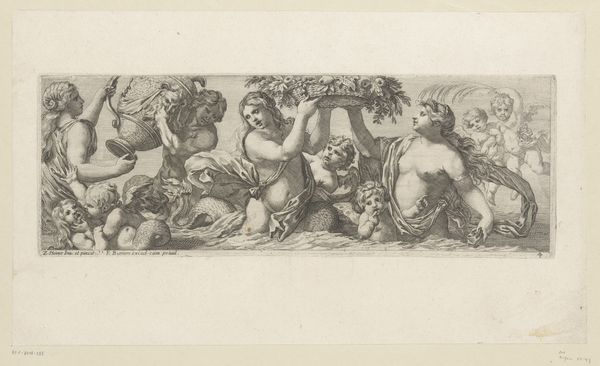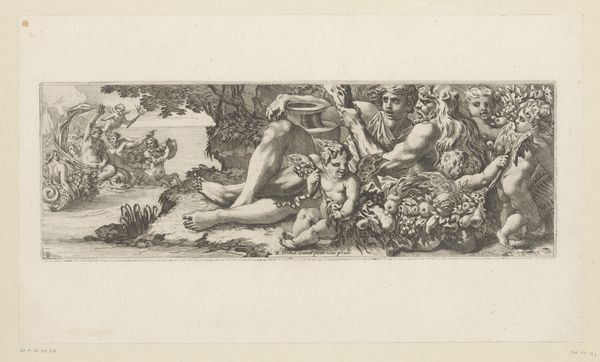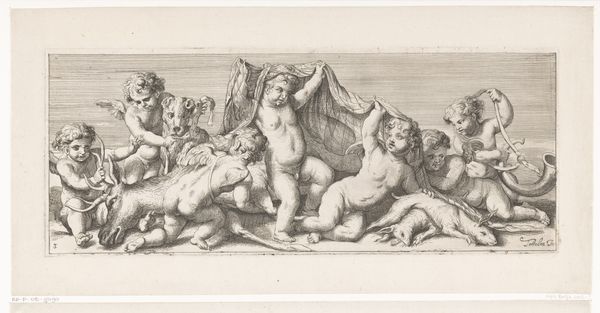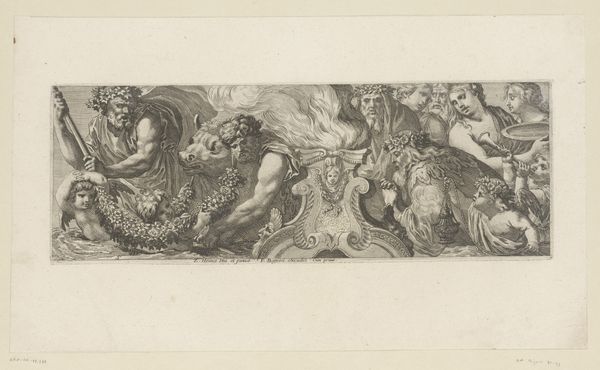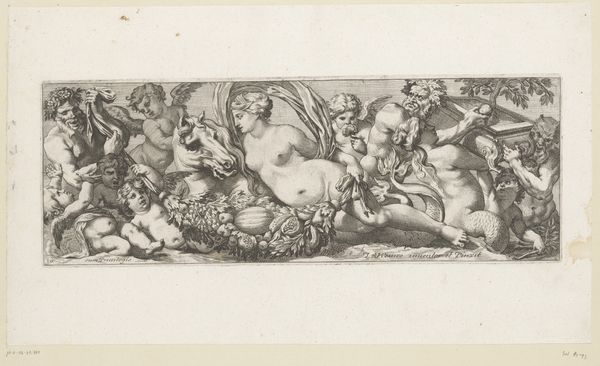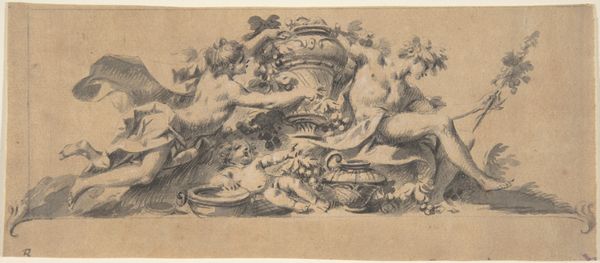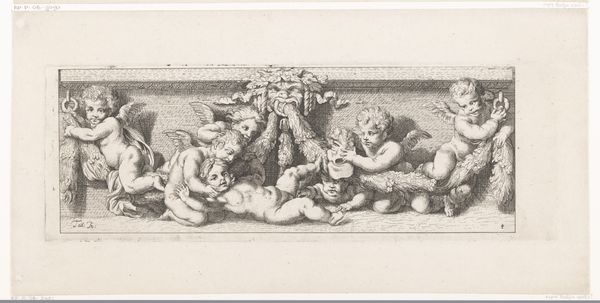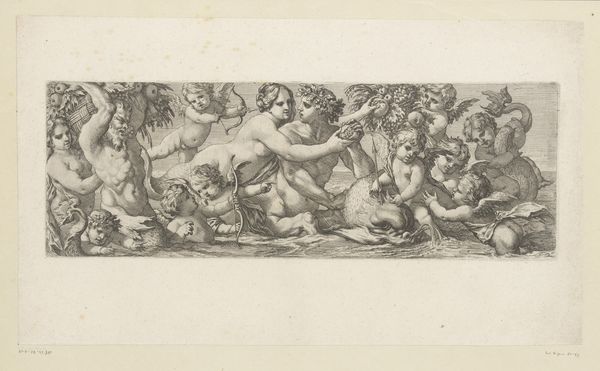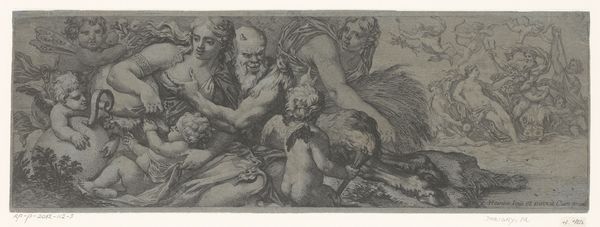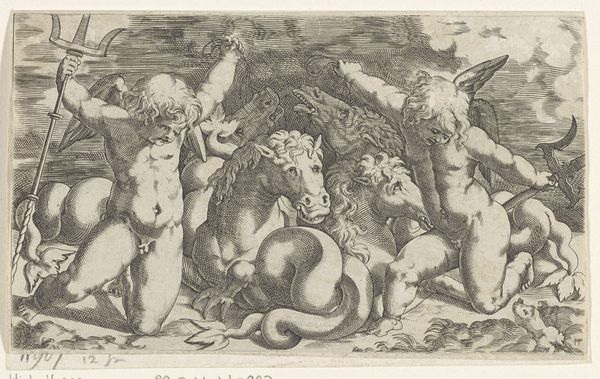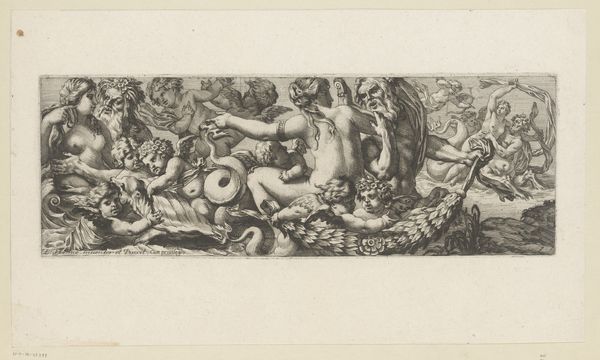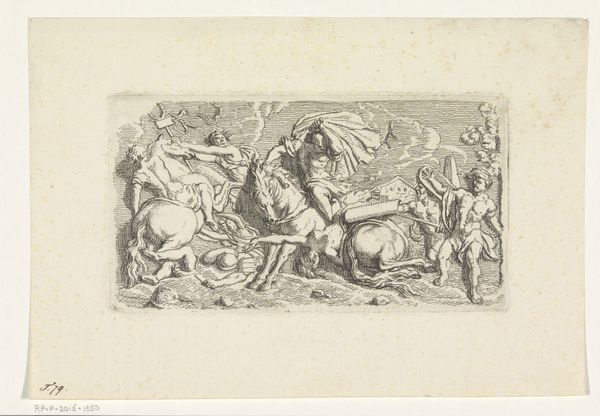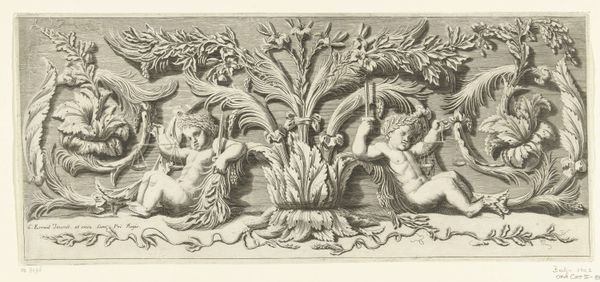
Nereïde op wagen getrokken door hippocampussen, omringd door putti 1630 - 1720
0:00
0:00
engraving
#
baroque
#
figuration
#
history-painting
#
engraving
Dimensions: height 130 mm, width 371 mm
Copyright: Rijks Museum: Open Domain
Curator: This artwork is entitled 'Nereïde op wagen getrokken door hippocampussen, omringd door putti,' or 'Nereid on a Chariot Drawn by Hippocampi, Surrounded by Putti.' It’s an engraving, likely dating from somewhere between 1630 and 1720 and is attributed to François Bignon. It really packs a punch, doesn’t it? Editor: My first impression is "Wow, that's busy!" All those bodies crammed in... it’s a real Baroque explosion of cherubic flesh and mythical creatures. But in monochrome, all this life somehow looks both dramatic and dreamlike at the same time. It's weirdly calm despite the chaos. Curator: It does have a surprisingly still feel. What captures my imagination most is this blend of classical mythology with what looks like, well, unabashed exuberance. Nereids, the sea nymphs, were always a popular subject. The putti add this layer of almost mischievous playfulness – what symbols do they bring forth? Editor: The putti… the sheer abundance! They signal fertility, abundance, love – the driving forces of nature itself, basically. They soften some of the potentially austere grandeur. This scene isn't about stiff nobility. I read these winged babes as the arrows that target something very particular in all of us. And those Hippocampi pulling the wagon— what an incredible creation; the blend of fish and horse is something that our deeper self longs to see become more than real. Curator: Absolutely! It almost feels like an anticipation of some modern fantasy, only rooted in something so much older. The engraving technique itself really adds to that sense of timelessness; each line precisely etched. Do you see it as simply decorative or do you think there's a deeper meaning being conveyed here? Editor: I think it's layered. Yes, there's the obvious celebration of beauty and life through the classical imagery. But the controlled chaos, the overwhelming sense of vitality, that is like the raw unconscious coming to life. Bignon's 'Nereid' offers more than just visual spectacle; it's an invitation to a sort of ecstatic communion. What will our spirit take hold of! Curator: An ecstatic communion… I love that. I find myself wondering, how do we translate a symbol from that moment in time? Are putti timeless? I feel they can make the journey! The skill and that spirit is present today through cartoons. Editor: Cartoons, yes! That lineage from cherubs to Saturday morning chaos isn’t random… Perhaps, it's precisely that enduring element of chaos that allows images like this— and like those putti!—to continue rippling outwards through the years.
Comments
No comments
Be the first to comment and join the conversation on the ultimate creative platform.
